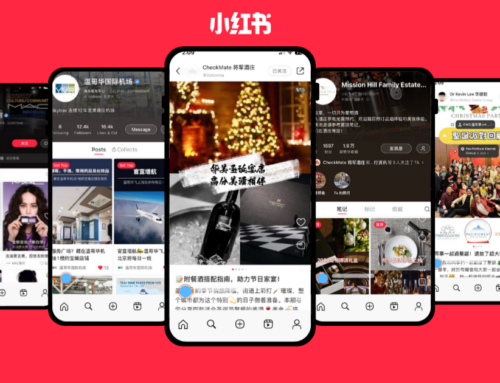Introduction
Chinese Advertising and Marketing in Canada
As a business owner, you often might be thinking how to advertise my products to Chinese community?
“If you want to attract Chinese audience to your business, you ought to use Chinese social media channels.”
In Canada, Chinese customers are one of the most important communities with strong purchasing power and disposable income. You need to gain a deeper understanding of how to use Chinese social media channels to help your business before you start marketing and advertising activities.
Some Chinese social media channels are broad in reach and services. Others find a niche with specific demographics or interest groups. All have the potential to reach new audiences. Choosing the right one will have a big impact on your ROI.
We reviewed current Chinese social media channels and identified five key platforms you need to understand. Three major players and two emerging channels dominate the current landscape. Just as with English language social media, a combination approach, utilizing more than one channel, may be right for you.
The article aims to help you understand these mainstream channels popular in the Chinese community and explore a wide variety of ways to market to the Chinses population in Canada.
Market overview
Chinese marketing landscape in Canada
If you’re seeing a stagnant amount of customers for your business, you need to look around and see the potential market in the Chinese community in Canada – and reach out to them by marketing your brand on Chinese social media platforms.
The impact of smartphones and online shopping on the Chinese market has been rapid and transformative. Digital connections opened new markets at home and abroad. For companies ready to embrace multicultural marketing, hundreds of millions of potential customers are within reach.
Current estimates place the total number of Chinese language internet users at over a billion people. But Internet giants such as Google, Meta (Facebook), and Twitter have language barriers, cybersecurity hurdles, and digital payment challenges for mainland Chinese residents. In their place Chinese-language social media channels are filling the gap.
Chinese-language social media has been the primary avenue for the trend to online commerce. Integrated apps are indispensable to modern Chinese life, offering shopping, connections to friends and community, entertainment, and even work-related functions. All these features attract more users and more reasons for businesses to have an online Chinese language presence. The result is a highly-effective, integrated mobile shopping experience considered by many to be superior to English-language counterparts.
That preference for familiar social media often continues when immigrating or visiting Canada. To reach these consumers, companies in markets such as Canada should be considering Chinese social media as part of their marketing mix. Two established players and a relatively new entry make up the current top three Chinese social media. Two emerging properties also hold promise.
We have compiled a brief overview of each one — to inform your multicultural marketing decisions and help you choose the most effective ways to reach your target demographics in the Chinese market.
Whichever channels you think are right for you, consider the benefits of an integrated, strategic multicultural marketing plan as part of your implementation strategy. Finding the right audience is pointless if you do not have the right message. Multicultural marketing combines in-depth understanding of target markets, local experts for translation, and cultural sensitivity considerations to make sure brands and messaging keep their appeal in every language.
Chinese social media channels
Most of the Chinese audience in Canada visit popular sites of China owing to their cultural ties with the country. They watch popular TV shows of China and Chinese social media channel – WeChat. To attract Chinese audiences, businesses need to have a deeper understanding of how social media channels help them to start marketing activities.
In less than a decade, WeChat has penetrated virtually every aspect of Chinese life. The platform is used in both personal and business settings and offers a seamless environment where users can shop, work, and socialize, all within the app and its fast-loading ‘mini-programs’.
WeChat is a sensible entry point to Chinese social media, offering a combination of the largest audience and broadest functionality of all Chinese social media platforms.
Vancouver International Airport (YVR) chose LAT for help reaching thousands Chinese-speaking travelers on WeChat every day.
“Although many Chinese-speaking travellers are multilingual, they often find it easier to read information written in Chinese,” says Tianran Wu, LAT’s Marketing Coordinator. “Since its inception in 2018, YVR’s WeChat account has become a well-known and reliable source of information for Chinese travellers. Followers grew by 33% in 2021, despite the COVID-19 pandemic. We are so happy YVR is able to reach out and help more people.”
LAT’s WeChat training for account set-up and best practices is one way to start your Chinese social media efforts. We also have full-featured multicultural marketing programs to help you maximize your profile with Chinese consumers in Canada.
Insert quote here from LAT WeChat trainer – value of program in getting people up and running with minimum fuss and bother.
Often described as ‘Chinese Twitter’ Weibo is another social media platform with a huge subscriber base (over 500 million users). Three quarters of Weibo’s users are under forty years old, with slightly more male than female users. Considered an ideal platform for creating brand awareness with Chinese consumers, Weibo’s microblogging capabilities include text, images, and gifs, short videos, making it popular with key influencers and brands as well as individual users. As with Twitter, businesses and celebrities can have verified accounts. There is an application process and a cost involved to have an account verified. LAT can help you get your account approved so you can reach Canada’s fast-growing Chinese-language consumer market.
Quote from Julie Wong-Gravend or Lise, why they are seeing more upscale clients turning to Weibo and Red to reach affluent Chinese consumers in Canada.
Red
For global brands, Chinese population in Canada, is blessing!
China’s e-commerce industry has grown exponentially and the larger share of its growth has come from Xiaohongshu (“Little Red Book”), China’s most popular social shopping platform. Red is the nickname for a new, but fast-growing platform, Xiaohongshu aka ‘Little Red Book’.
This Instagram-style platform launched in 2013, and now has over 300 million users sharing the site’s fashion, beauty, health, and travel content. Xiaohongshu’s user base is 90% female, with 70% born after 1990, currently making it an ideal platform for targeted content from on-trend lifestyle brands.
To drive increased growth however, Xiaohongshu is now promoting content designed to attract male users to the platform. This creates additional opportunities for marketers to tap into new audiences on the platform.
Emerging Platforms
Douyin (Tiktok)
While several Chinese apps have failed to succeed in other countries, TikTok managed to pull it out in the international market.
Tiktok is a familiar name to English social media users, but many won’t be aware that the Chinese language version Douyin came first. The video sharing app has 400 million regular users and continues to grow in popularity, not least of all because of shopping features such as the option to link from videos to purchase, livestreaming, and a vibrant ecosystem of celebrities, brands, and other content creators.
Douyin’s popularity with older demographics in 2nd and 3rd tier cities make it a social media channel to consider for reaching older Chinese-speaking demographics visiting or living in Canada.
Zhihu
Let’s cut straight to the point:
Zhihu is the most popular Q&A platform in China and its time your business should consider the app for marketing your brand to Chinese consumers. Even in Canada, Zhihu is popular amongst Chinese population. For B2B brands and educational institutions of Canada, Zhihu is your preferred platform for reaching out to Chinese audiences.
With its focus on questions and answers, Zhihu is a slightly different platform from the other four profiled. Similar to the English-language site Quora, Zhihu has more than 500 million monthly visitors, over 400 million content posts, and over 100 million monthly users generating content. This platform is an excellent place for providing quality content and community engagement, building influence and credibility with the older, affluent demographics who form the largest number of Zhihu users.
Comparison Table
Here’s a snapshot of how each social media platform helps to attract a certain market segment in the Chinese population of Canada.
|
Platform |
Main Audience Segment |
How it is used |
|
|
Wide cross section of Chinese community |
All-round program with wide usage for personal and business |
|
|
Young, educated, 55% male |
‘Chinese Twitter’ |
|
Xiaohongshu |
Mobile phone-using young females 15 – 30 |
Ecommerce with user-generated content and reviews |
|
Douyin (Tiktok) |
Gen Z/Millenials, over-40s |
Short video content |
|
Zhihu |
Affluent and educated users |
Website motto: if there is a question, there is an answer |
Key Takeaways
- Social media platforms in China are vastly different from the west. While Facebook, Instagram, and Twitter continue to dominate the western world, China has seen the emergence of many innovative new social platforms.
- For the widest reach look to WeChat or Weibo as your entry into Chinese social media. Establish a presence and build on it with mini programs for ecommerce.
- Promoting your upscale brand to Chinese consumers? Consider Red and its large following of affluent female users in the 15-30-year-old demographic.
- If your strategy includes evergreen content, Zhihu’s focus on questions and answers makes it a smart platform to post popular content you know generates interest and repeated clicks in the long-term.
Conclusion
Whether it’s shopping, business, entertainment, or community, Chinese social media has embedded its functionality into the community. Mobile first, integrated platforms like WeChat are integrated into Chinese online life, offering broad-reaching services for work, shopping, and socialization. Niche communities are also emerging, via focused platforms such as Xiaohongshu, with its primarily young, affluent female audience. The sheer numbers of users are also impressive. With roughly a billion Chinese-speaking Internet users now online, a presence in this language community is a smart investment. But launching in Chinese social media presents specific hurdles. The professional assistance of a multilingual marketing company can make your efforts go more smoothly, with greater potential for success.















